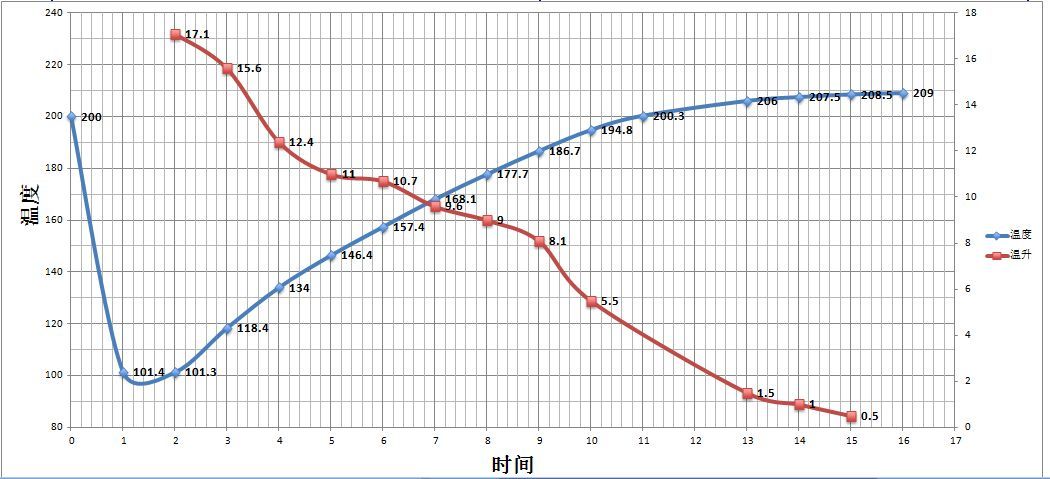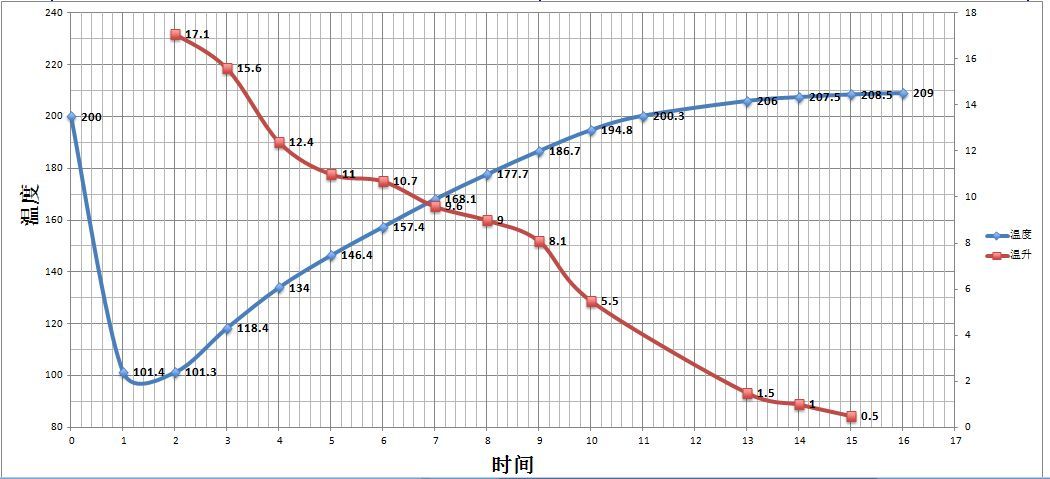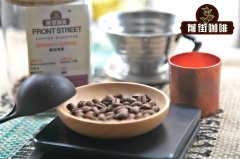What is a commercial bean? -characteristics and roasting performance of commercial beans, espresso production process
Professional coffee knowledge exchange more coffee bean information please follow the coffee workshop (Wechat official account cafe_style)
Market from the perspective of coffee market, coffee beans are mainly divided into two categories, commercial beans and boutique coffee beans.
What are boutique coffee beans?
That is, "coffee beans with unique flavor cultivated under special climatic and geographical conditions"
Why is boutique coffee called "boutique"? The quality of the boutique coffee we know is higher than that of ordinary commercial coffee, and there is a close relationship from planting altitude to the kind of coffee beans. After strict selection and classification, according to the standards of the American Fine Coffee Association (SCAA), it is very important to pick out defective coffee. Coffee beans with defects or defects are picked out by hand. These beans are called "Pasilla". Unfortunately, these "Pasilla" will still be in circulation in the market, and it is the producers of commercial coffee who buy these defective beans. Only by ensuring the quality from the source can the boutique coffee be called "boutique"!

What is commercial coffee?
Commercial beans are not very high-quality coffee beans themselves, with low quality and high defect rate. In terms of price, high-quality coffee beans are several times more expensive than commercial beans. From a cost point of view, of course, the profit margin of choosing commercial beans will be very large.
In terms of the flavor of individual beans, the taste of coffee obtained from commercial beans is much lower than that of high-quality coffee beans. Generally, commercial beans are chosen to be used for blending. After mixing the beans, you can also make coffee with a good export flavor, which can be used to make lattes. Cabo and other espresso. Popular science | composition analysis of common coffee drinks, the difference between latte, Cabo and Flat White

Commercial coffee VS boutique coffee
This kind of commercial coffee beans are generally cheaper, and both raw coffee beans and roasting techniques can only be produced according to a batch standard. The biggest difference between boutique coffee and commercial coffee beans lies in their quality and price. Boutique coffee beans may cost 90 yuan a pound, while commercial beans may cost as little as 40-50 yuan a pound.
Generally speaking, how to choose coffee beans depends on the positioning of the coffee shop itself. If your coffee shop pursues cost control, espresso is usually made with commercial beans. If you make boutique coffee and provide you with authentic freshly ground coffee, then boutique coffee beans will be the best choice, and the varieties that are usually the most commonly used are Brazil, Colombia, Blue Mountain, Yega Xuefei and Manning.

Blended coffee: commercial coffee beans are mostly used for blending coffee.
What is blended coffee?
When coffee is mixed with beans from a variety of producing areas, the baker will bake two or four kinds of coffee beans at the same time, all of which come from different producing areas and growing countries, which can be divided into raw beans and cooked beans, which are first mixed with raw beans and then baked together. Cooked spelling means that each kind of coffee is roasted in a different way.
To provide your favorite coffee flavors, they are all mixed at different rates (roasting and blending). Coffee is a natural product from plants, so it is a living and constantly changing thing. Every time you roast coffee, you also have to taste it, mixing about 2-3 different kinds of coffee beans. To achieve a balanced flavor and delicious taste, this is indeed a technical task.
Colombia, Nicaragua, Brazil-almonds, chocolate, nuts, caramel
Ethiopia, Tanzania, Rwanda-sweet, sour, nutty, lemon, sometimes sour
India, Indonesia, Papua New Guinea-botanical, spicy, salty
Mexico, Peru, Yemen, Yunnan, Guatemala-cream, cocoa, nuts
The industry generally uses low-acidity blended coffee, such as Vietnam Luodou, Brazil, Yunnan, Mantenin, Guatemala and other commercial grade beans. Italian coffee beans are usually deep-roasted, medium-deep roasted, and the oil will be good. Suitable for espresso, lattes and other milk coffee.
An ideal Espresso should be able to strike a balance between the various elements, taste bright, and feel sweet but not bitter in the throat after drinking it.
To put it more specifically, it should have moderate sour, bitter, sweet, rich taste, solid and mellow consistency, lasting, and make people feel as refreshing and sour as citrus.

Characteristics and baking performance of commercial beans
For example, Italian # 2: 70% Brazil Bazil 30% Columbia, cooked spelling means that each kind of coffee is roasted in a different way
Commercial Minas South Brazil: coffee raw beans are of high moisture and good quality
Brazilian flavor characteristics: comfortable sweet and bitter taste, the entrance is very smooth; with a hint of grass, the fragrance is slightly bitter; smooth and smooth, the aftertaste can be pleasant

Brazil belongs to soft beans and Ethiopia belongs to hard beans.
Knowing the flavor characteristics, what should the baker do when he gets this batch of Brazilian raw beans?
Brazilian coffee generally grows at an altitude of 1000-1300 meters, so its density is relatively low, with a water content of 11.7%. Bourbon is mostly in the sun and half in the sun; the water content is moderate, the bean quality is soft, and the thickness from the bean surface to the bean core is thin, so it is not suitable for baking at too high temperature. The temperature on the inner wall of the boiler will scald the bean surface, so it will taste bitter.
At the same time, if we want to show the characteristics of good thickness of nuts, milk chocolate and alcohol, and serve as a matching base, we choose to throw beans over medium heat, keep the firepower to the stage of dehydration, and fine-tune as the temperature rises after the first explosion. promote the caramelization reaction more fully, heating up to near the second explosion can arrange beans.

Commercial Brazil curve

Commercial Brazil curve
Huilan, Colombia
Colombia HUILA
Flavor features: the taste is rich and solid, with a pleasant sour taste, mellow smell, moderate acidity, rich sweetness and very intriguing. Because the price is cheap, the beans are small, so they are suitable for blending coffee. Coffee has a strong taste and heavy texture.
Its nutty, chocolate and caramel aromas and suitable acidity can be called premium boutique coffee, suitable for single or Italian blended base.

Product name: Columbia Huilan
What should the baker do when he gets this batch of Colombian raw beans?
Colombian coffee plays many roles in the market, suitable for Italian blending, Colombia is generally 1500-1800 meters above sea level; mostly Catura species, washing treatment, high density, uniform bean eyes, full bean shape (bean core to bean table thick). Water content: 12.5%


According to the flavor characteristics of raw beans, I want to show the aromas of nuts, chocolate and caramel.
Baking method: stretch the baking time longer, so adjust the firepower when the dehydration is completed, bake to the maximum when the baking door is open to the maximum, and drop the beans close to 2 explosions.

Cooked beans: commercial Colombia and Commercial Brazil
The longer the baking time, the lower the acidity, and the thickness and sweetness of the alcohol will increase, so how much you bake depends on what you want. Of course, the raw coffee beans in different producing areas and different treatment methods have different ways of expression.

The seventh day after baking
Use this to match the beans.
Extract a cup of espresso
▼
-Water temperature | 93-94 ℃
-pressure | 9 ba
-freshly ground coffee powder | 20g (using electronic scale)
-Total weight of coffee | 40g (using electronic scale)
-brewing time | 25-28 seconds (using timer)
Flavor description:

By using the method of baking and then matching, we can have a more thorough understanding of the performance of each bean, in which we can not only adjust the appropriate baking degree according to the concentrated performance to achieve the desired effect, but also refer to the test results of each bean cup to judge the choice. Beans are Italian # 2 matching in the store: Colombia + Brazil uses medium and deep baking. Flavor description: black preserved fruit, toffee, nuts, caramel cream sweet, slightly sour not irritating, balanced, grease.
When the oil is distributed in the tongue, it is thick and sticky, and the sweetness just suppresses the acid to make the whole soft and balanced, while maintaining the sweet aftertaste for a long time.
Photo Source: Qianjie Coffee
Important Notice :
前街咖啡 FrontStreet Coffee has moved to new addredd:
FrontStreet Coffee Address: 315,Donghua East Road,GuangZhou
Tel:020 38364473
- Prev

How to buy coffee beans in Guangzhou _ best price list of coffee beans in Guangzhou-recommended coffee beans in Guangzhou
Professional coffee knowledge exchange more coffee bean information Please follow the coffee workshop (Wechat official account cafe_style) what are the criteria for choosing beautiful coffee beans? A: first of all, don't choose supermarket coffee beans. Boutique coffee emphasizes freshness, and the taste period is only about one month, while the coffee in supermarkets has long lost its proper flavor after a long time of transportation and storage. More importantly, thousands
- Next

What kind of coffee beans is Kaddura? Introduction to the flavor characteristics of Caturra coffee beans made by hand
For more information on coffee beans, please follow the coffee workshop (Wechat official account cafe_style) Coffee belongs to the evergreen shrub of the genus Rubiaceae. There are about 125 species of plants under the genus Coffea, distributed in the subgenus Coffeae (25 in Africa and 55 in Madagascar).
Related
- Guji coffee producing area of Guji, Ethiopia: Humbela, Shakiso, Wulaga
- What is the most expensive variety of Qiloso in BOP multi-variety group?
- How to store the coffee beans bought home?
- Why are Yemeni coffee beans so rare now?
- Ethiopian Sidamo all Red Fruit Sun Sun Santa Vini Coffee beans
- SOE is mostly sour? What does it mean? Is it a single bean? what's the difference between it and Italian blending?
- Is Italian coffee beans suitable for making hand-brewed coffee?
- How to choose coffee beans when making cold coffee? What kind of coffee beans are suitable for making cold coffee?
- Just entered the pit to make coffee, what kind of coffee beans should be chosen?
- Can only Japan buy real Blue Mountain Coffee? What are authentic Jamaican Blue Mountain coffee beans?

